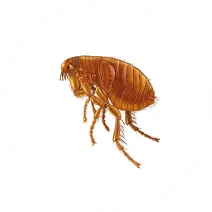Does Weather affects fleas and ticks.
How exactly does the current weather Affect Fleas and Ticks?

In the event that you’ve been hoping the changing seasons could help solve your flea and tick problems, we now have some disappointing news: it can take more than a passing freeze or a heat wave to kill these pests. However, alterations in the weather do affect flea and tick populations — plus some conditions might help fleas and ticks thrive. Here’s what you should know.
Do Fleas and Ticks Die within the Winter?
Fleas and ticks have been in existence for a long time, therefore it’s no surprise they’ve developed a few tricks to survive the cold. Those tricks differ for every pest, though.
In the great outdoors, fleas survive the winter within the warm protection of wildlife dens — as well as on the bodies of raccoons, possums along with other wild animals. The specific situation is comparable for fleas in your pets — except the “den” will be your home.
While fleas enjoy your dog’s or cat’s warm body, they also scatter eggs into carpets, bedding and furniture. The mild climate in the home provides ideal conditions of these eggs to produce into new adult fleas. Contact with severe cold will kill fleas, but they still have many possibilities to find warmth and shelter.
Ticks are tough and won’t be deterred by a quick cold snap — it often takes an extended, extremely cold winter to significantly lessen the tick population. Ticks can often find shelter beneath the snow where in actuality the air around them is warm adequate to act as insulation.
Are Fleas and Ticks Impacted By Rain?
Spring is growth season — and not just for flowers. Fleas and ticks thrive in the warm, humid weather, too, and they benefit from mice, raccoons, deer and other wildlife that are now active, breeding and finding shelter from the sun in cool, damp places.
Spring rain does not help, either; fleas or ticks thrive in humid conditions. Fleas love the moisture and shelter of growing, rain-fed grass and plants, while ticks use the abundant growth as a ladder to cling onto your pet’s body. Folks are more energetic through the spring, too, and pet owners are eager to take pleasure in the warmth and light using their pets. But the additional time we spend outdoors with our pets, the more opportunities there are for fleas and ticks to affix a ride.
As the weather does affect the flea and tick population outside, you are able to help control the population in your pet plus in your house. Below are a few things you can do:
- Vacuum frequently, particularly in areas where your dog spends the most time.
- Launder your pet’s bedding often.
- If you’re spending a lot of time outdoors, check your pet after every trip for ticks and take away them carefully.
- Consult with your vet. There are numerous preventive options for both fleas and ticks; pose a question to your vet which ones would be best for the pet. If you’re not already using a preventive, topical treatments like shampoos or sprays can kill fleas and ticks currently on your own pet. Then start a preventive treatment to stay prior to the problem as time goes by.
- Fleas and ticks are a nuisance, but they’re manageable and preventable. Just don’t depend on the weather to fix the problem for you.